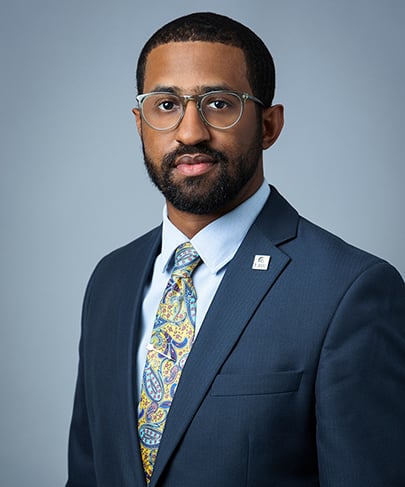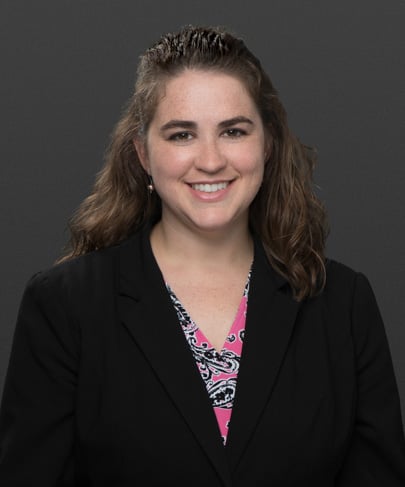Employers’ Top 10 Burning Questions About the Families First Coronavirus Response Act Answered
Download PDF- Jodka, Sara H. Beemer, Jeffrey M.
- Industry Alerts
Click “Subscribe Now” to get attorney insights on the latest developments in a range of services and industries.
In light of the Families First Coronavirus Response Act, H.R. 6201 (FFCRA) passing into law, we put together a top ten list of questions employers have about the FFCRA.
1. What are the expansions for employers that require them to provide certain time off / payment benefits to employees?
There are two protections, or rather, benefit carve-outs for eligible employees under the FFCRA: (1) the Emergency Family and Medical Leave Expansion Act (FMLA Expansion); and (2) the Emergency Paid Sick Leave Act.
Each have their own eligibility requirements and differ in how they work, so understanding the differences between the two is critical to proper application.
2. What size of employer do each of the acts apply?
Both apply to employers with fewer than 500 employees, but in the case of public agencies, those employing one or more employees.
3. What about small businesses, i.e., those with 50 or fewer employers?
The FFCRA would apply to employers with 50 or fewer employees, which is a departure from FMLA benefits.
However, both the FMLA Expansion and the Emergency Sick Leave Act include provisions that the Secretary of Labor has the authority to issue regulations, for good cause, that exempt small businesses with fewer than 50 employees. In the FMLA Expansion, the Secretary of Labor may exempt small businesses from providing public health emergency leave when the imposition of such would jeopardize the viability of the business as a going concern. In the Emergency Sick Leave Act, the Secretary of Labor may exempt small businesses from the qualifying reason of an employee having to be on leave to care for a minor child in the event of a school closure or day care provider impossibility when the imposition of such requirements would jeopardize the viability of the business as a going concern.
The Secretary of Labor is to issue regulations by March 25, 2020, which, hopefully will provide more information to small businesses about the application of these exceptions.
4. When does FFCRA go into effect and how long does it last?
It will go into effect no later than 15 days after the President signed it on March 18, 2020, which is April 2, 2020.
5. Is the FFCRA retroactive to cover time missed from work prior to the President’s signature?
No.
6a. What does the FMLA Expansion require employers to do?
The FMLA Expansion is covered by Division C of the FFCRA. It allows that eligible employees may take FMLA leave for a “qualifying need related to a public health emergency,” which means that the employee is unable to work (or telework) in order to care for the employee’s own son or daughter under 18 years old because the child’s school or place of care has been closed or the child care provider of the child (e.g., someone who receives compensation for providing child care services on a regular basis) is unavailable, due to a public health emergency.
To be eligible, an employee must have been employed for at least 30 calendar days by the employer from whom leave under the FFCRA is requested, which is significant reduction in working time required for benefits from the 1-year / 1,250 hour requirement in the pre-amended FMLA.
The first 10 days of the leave are unpaid; however, during that period, employees would be able to utilize any employer-provided sick leave balances that they might have. (They also may be able to use the sick leave entitlement provided under the Emergency Sick Leave Act discussed below). After that 10-day period, the employer will have to pay the employee at least 2/3 the employee’s regular rate of pay for the hours the employee was or would have been normally scheduled to work. There is a cap, however, and that cap is that the employee cannot receive more than $200 a day or $10,000 in the aggregate for the entire duration of the leave.
Hourly Employee Example
An employee’s child’s school has been shut down by government closure since March 16, 2020 and the employee, who earns $18 an hour and regularly works 8 hours a day and 40 hours a week, took off work that day to care for the employee’s under 18-year-old daughter. The FFCRA becomes effective by April 2, 2020. The employee’s 10-day unpaid leave period is from April 2, 2020 through April 12, 2020 during which time the employee may use other sick leave and paid time off entitlements as the employee has available. As of April 13, 2020, the employee may receive reimbursement of $96 a day (2/3 the $144 the employer would have paid if the employee would have worked). The child’s school is closed until the end of the school year (would be different if the leave is for a child care impossibility), May 29, 2020, meaning the employer would be responsible for paying the employee for 34 days, for a total of $3,266.00.
Salaried Employee Example
Using the same dates, but changing the scenario using a salaried employee who earns a $60,000 annual salary, beginning April 14, 2020, the employer would pay the employee $153.84 a day (the employee’s regular rate would be $28.85 and 2/3 that rate for 8 hours a day would be $153.84). If the child’s school (would be different if the leave is for a child care impossibility) is closed until the end of the school year, May 29, 2020, the employer would be responsible for paying the employee for 34 days, for a total of $5,230.56.
When an employee’s schedule varies from week to week and the employer is unable to determine with certainty the number of hours the employee would have worked had the employee not taken leave, the employer would take a number equal to the average number of hours the employee was scheduled to work over the 6-month period ending on the date on which the employee takes leave, including hours for which the employee took leave of any type.
However, if the employee did not work over such a period, the reasonable expectation would be the average number of hours per day that the employee would normally be scheduled to work at the time the employee was hired.
Employees are to provide employers notice of the need for this leave as soon as practicable.
6b. Are employers required to restore employees to their original positions?
Yes, with the exception of employers with fewer than 25 employees in certain circumstances. For employers with fewer than 25 employees, if the employee’s position no longer exists due to economic conditions or other changes in the operating conditions of the employer that affect employment, and that are caused by a public health emergency during the period of leave, then they do not have to restore the employee’s employment. However, the employer must make reasonable efforts to restore the employee to an equivalent position.
6c. Are any employees exempt from the FMLA Expansion?
Yes. If the employee is a health care provider or emergency responder, the employer may elect to exclude the employee from the FMLA leave extension allowance.
6d. Can the employer require employees to substitute other leave?
No, but an employer may offer the employee the option to substitute any accrued vacation leave, personal leave or other leave for the unpaid leave portion of the allowance, which, in application, could mean that during the 10-day waiting period, the employee could receive full wages as opposed to the 2/3 benefit amount.
6e. Does the employer have to continue employee benefits during the leave?
Nothing was added or changed to the FMLA on this issue via the FFCRA, so employers will have to continue benefits just like they are required to do under the pre-amended FMLA requirements.
6f. Does the employee have to provide notice, just as required under the employer’s FMLA policy?
Yes. If the employee’s need for leave is foreseeable, the employee must provide as much notice as possible.
7a. What does the Emergency Paid Sick Leave Act require an employer to do?
The Emergency Paid Sick Leave Act is provided for in Division E of the FFCRA. It states that employers must provide paid sick time immediately (as opposed to the 10-day waiting period in the FMLA Expansion) to an employee if the employee is unable to work (or telework) because of one of the following reasons:
- The employee is subject to a Federal, State or local quarantine or isolation order related to COVID-19.
- The employee has been advised by a health care provider to self-quarantine due to concerns related to COVID-19.
- The employee is experiencing symptoms of COVID-19 and seeking a medical diagnosis.
- The employee is caring for an individual subject to a local quarantine or isolation order or who has been advised by a health care provider to self-quarantine.
- The employee is caring for the employee’s child if the child’s school or childcare provider has been closed or is unavailable due to COVID-19 precautions.
Full-time employees are entitled to up to 80 hours of paid sick time, and part-time employees are entitled to a number of paid sick time hours equal to the number of hours that the employee ordinarily works, on average, during a 2-week period.
7b. Are there different payment requirements if the leave is for the employee vs. caregiver leave?
Yes. Paid sick leave is calculated based on the employee’s regular rate of pay for the number of hours the employee usually works, up to a maximum of:
- $511 per day and $5,110 in the aggregate where the employee him or herself is subject to a quarantine order related to COVID-19, has been advised by a health care provider to self-quarantine, or is experiencing symptoms and seeking a medical diagnosis, and;
- $200 per day and $2,000 in the aggregate where the employee is caring for another individual subject to a quarantine order, the individual has been advised by a health care provider to self-quarantine, or the individual is experiencing symptoms, or the employee is caring for a son or daughter due to school or childcare closure.
If the employee is off work because the employee is caring for an individual who is subject to a Federal, State or local quarantine or isolation order, is caring for a son or daughter of such employee if the school or place of care of the son or daughter has been closed, or the child care provider of such son or daughter is unavailable, due to COVID-19 precautions, or the employee is experiencing any other substantially similar condition specified by the Secretary of Health and Human Services in consultation with the Secretary of the Treasury and the Secretary of Labor, then the employee's rate of pay would be 2/3 the employee’s regular rate of pay, not 100%.
7c. How long does an employee have to be employed by the employer before the employee is eligible for the emergency leave benefit?
Paid sick time is immediately available for use, regardless of how long the employee has worked for the employer.
7d. Does the Emergency Sick Leave Act allow employers to require employees to exhaust other leave, including paid time off, before they can use the Emergency Sick Leave Act Benefit?
No. The Emergency Paid Sick Leave Act includes an express provision that an employer may not require an employee to use other paid leave provided by the employer to the employee before the employee uses the paid sick time under this Act.
7e. What are the other conditions or restrictions of the Emergency Sick Leave benefit?
- It does not carry over from year to year, and unused paid sick time is not payable upon separation from employment.
- The employer may not require, as a condition of providing paid sick time, that the employee search for or find a replacement employee to cover the hours during which the employee is using sick time.
- The employer may not discriminate or retaliate against the employee for taking leave under the Emergency Sick Leave Act.
- The employer may require employee follow reasonable notice procedures to continue to receive paid sick time.
7f. Are any employees exempt from Emergency Paid Sick Leave?
Yes. The Secretary of Labor will have authority to issue regulations for good cause to:
- Exclude certain health care providers and emergency responders from the definition of employee.
- Exempt small businesses with fewer than 50 employees from the requirements if the employee is caring for a son or daughter of such employee if the school or place of care of the son or daughter has been closed, or the child care provider of such son or daughter is unavailable.
- As necessary to carry out the purpose of the Emergency Sick Leave Law.
Again, the regulations are to be issued by March 25, 2020, and we will provide more information at that time about how these exemptions may work.
7g. What is the penalty for failure to pay sick time under the Emergency Sick Leave Act?
Failure to pay is considered failure to pay minimum wage under the Fair Labor Standards Act, which would include liquidated damages of two-times the amount owed and attorneys’ fees.
8. Do the FMLA Expansion and Emergency Paid Sick Leave Act ever work together?
Yes. Because both the FMLA Expansion and the Emergency Paid Sick Leave Act cover instances where leave is needed to take time off to care for an employee’s son or daughter if the child’s school or place of care has be closed or the child care provider is unavailable due to COVID-19 precautions.
Notably, the Emergency Paid Sick Leave Act, which has no waiting period, would actually allow the employee to obtain paid leave during the 10-day waiting period that is required under the FMLA Expansion. Because the 2/3 reimbursement would kick in due to the Emergency Leave being caregiver leave, the amount due to the employee from the employer would be the same under both the FMLA Expansion and the Emergency Paid Sick Leave Act.
Using our example from above:
The FMLA Expansion and Emergency Sick Leave Act Working Together
An employee’s child’s school has been shut down by government closure since March 16, 2020 and the employee, who earns $18 an hour and regularly works 8 hours a day and 40 hours a week, took off work that day to care for the employee’s under 18-year-old daughter. The FFCRA becomes effective April 2, 2020. The employee’s 10-day unpaid leave period is from April 2, 2020 through April 12, 2020. During this time, the employee complies with all eligibility requirements under the Emergency Paid Sick Leave Act and the business is not an employer with fewer 50 employees that has been approved for an exemption for these employees, and eligible to receive 7 workdays of pay during that time period / 8 hours a day (assuming the employee was scheduled to work weekdays only) for a total of 56 hours and $672 (at the employee’s 2/3 hourly rate). As of April 13, 2020, the employee also would be eligible for the FMLA Extension, but would have 24 hours remaining under the Emergency Paid Sick Leave Act. Employee would use remaining 24 hours of Emergency Sick Leave through April 15, 2020 and, beginning, April 16, 2020, be eligible for the 2/3 rate under the FMLA Expansion, which would continue for up to $200 a day / $10,000 in total benefit.
In the event the business is a small employer with fewer than 50 employees and properly applies for and received an exemption under the Emergency Sick Leave Act (assuming that the Secretary of Labor allows it), the employee (so long as employed by the employer for 30 days and off work due to a child’s school closure or impossibility) would not be entitled to any compensation until eligible under the FMLA Extension as the Emergency Sick Leave Act would not be available.
9. Will employers be reimbursed for these payments to employees? If so, how?
Division G provides for Tax Credits for Paid Sick Leave and Paid Family and Medical Leave and provides that an employer will be allowed a tax credit against the employer’s excise tax, which is 6.2% of the wage paid by the employer with respect to employment.
The amount of the credit allowed is increased by as much of the employer’s qualified health plan expenses properly allocable to the qualified sick leave wages for which such credit is also allowed.
That is as much as we will get into taxes as our tax and employee benefits groups will issue separate publications specifically on the tax credit issue.
10. How does the FFCRA interrelate with state unemployment insurance benefits or in the event of a layoff situation or shutdown?
FMLA and emergency paid leave and unemployment deal with very different employment situations. For the leaves at issue in the FFCRA, an employee must miss work for specifically designated reasons.
Unemployment, on the other hand, applies when an employer no longer has a job for an employee and subjects that employee to a layoff, furlough, or termination situation.
As such, it is important to understand the difference of when an employee is on leave for one of the qualifying reasons to which the FFCRA would apply and to those where the employee is not working due to a plant/office/facility shutdown or closure where unemployment would be appropriate.
11. Are there any other requirements that employers need to be aware?
Yes. The Emergency Paid Sick Leave Act requires employers conspicuously post and keep posted a notice, to be prepared or approved by the Secretary of Labor. That poster will be issued by March 25, 2020.
This client alert is published by Dickinson Wright PLLC to inform our clients and friends of important developments in the field of labor and employment law. The foregoing content is informational only and does not constitute legal or professional advice. We encourage you to consult a Dickinson Wright attorney if you have specific questions relating to any of the topics covered.
Related Practices
Contacts

Recent Insights
- Industry Alerts Employers’ Top Burning Questions About The DOL’s Guidance On The Families First Coronavirus Response Act Answered
- Industry Alerts COVID-19 Surge Medical Leave Refresher for Employers
- Industry Alerts 「Families First Coronavirus Response Act:ファミリーファースト・コロナウィルス対策法」に関する雇用主からの重要な10の質問にお答えします。| Employers’ Top 10 Burning Questions About the Families First Coronavirus Response Act Answered
- March 14, 2025 Media Mentions Sara Jodka was recently quoted in the SHRM article, “Make Inclusion an Operational Strategy, Not a Standalone Program.”
- February 21, 2025 Industry Alerts Last-Minute Changes to Michigan Earned Sick Time and Wage Laws: Effective February 21, 2025
- November 21, 2024 In the News Five Dickinson Wright Attorneys Recognized in 2024 Mid-South Super Lawyers
- November 19, 2024 Industry Alerts Hold Up, Wait a Minute: Judge Blocks Salary Threshold Increase and Rolls It Back to Pre-July 2024
- August 22, 2024 Industry Alerts Federal Judge Sets Aside the FTC’s Noncompete Ban
- August 05, 2024 Industry Alerts Michigan Employers Must Increase Sick Time and Minimum Wage by February 21, 2025












